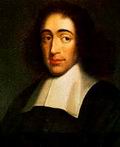|
|
|
|
|
Poslao: 25 Jul 2009 18:43
|
offline
- tuzor

- Legendarni građanin

- Pridružio: 03 Sep 2007
- Poruke: 4115
- Gde živiš: U Kraljevstvu duha
|
Na prvoj slici je Đotov rad "Lamentation" (Oplakivanje, Jadikovanje), iz kapele Skrovenji u Padovi.
http://www.abcgallery.com/G/giotto/giotto121.html
http://www.megaessays.com/viewpaper/82615.html
http://en.wikipedia.org/wiki/Lamentation_of_Christ
Citat:Mary Magdalene is shown with long red hair at Christ's feet, and Christ lies in his mother's lap. Have a close look at Giotto's figures. They turn, and throw out their arms, and bend over. We see their fronts, their backs. You could say that this is the beginning of the Renaissance, since Giotto is so interested in representing something (even something divine and sacred) in a very familiar, relateable way.
Look, too, at how each figure expresses his grief in a different way, as true individuals. Some throw their arms out, some are quiet. Remember that if you are a writer, you can write about how everyone felt, but if you are an artist you have to show emotions through the movement of the body and through facial expressions. I always imagine Giotto going to funerals to study how human beings look when they are grieving.
http://smarthistory.org/giottos-lamentation.html
Na drugoj slici je freska "Oplakivanje Hrista" (ili "Oplakivanje Gospoda") iz Manastira svetog Pantalejmona (Gornji Nerezi kod Skoplja).
http://sr.wikipedia.org/wiki/%D0%9C%D0%B0%D0%BD%D0.....0%B7%D0%B8
http://www.svetosavlje.org/riznice/freske/nerezi01.htm
|
|
|
|
|
|
|
Poslao: 25 Jul 2009 19:31
|
offline

- Pridružio: 07 Avg 2008
- Poruke: 2528
- Gde živiš: VII kat
|
Tačno 
Na obe freske predstavljeno je Oplakivanje Hrista, u Nerezima je to jedan od najlepših primera umetnosti iz doba dinastije Komnina, i uticaj ove kompozicije se na neki način primećuje i kod slavnog Đota.
Izvol'te tuzor. 
|
|
|
|
|
|
|
|
|
Poslao: 25 Jul 2009 19:59
|
offline

- Pridružio: 07 Avg 2008
- Poruke: 2528
- Gde živiš: VII kat
|
Žorž de la Tur - Marija Magdalena puta dva
|
|
|
|
|
|
|
Poslao: 25 Jul 2009 20:13
|
offline
- tuzor

- Legendarni građanin

- Pridružio: 03 Sep 2007
- Poruke: 4115
- Gde živiš: U Kraljevstvu duha
|
E, pa neću više da se sigram(o)! 
Em se mučim k'o crnac da nađem nešto što mi je ostalo zapreteno u krajičku mozga, em moj trud tako brzo bude razotkriven, em će ostali da pomisle... ma, neću na da mislim šta mogu da pomisle! 
Naravno, Žorž de la Tur.
Citat:La Tour is best known for the nocturnal light effects which he developed much further than his artistic predecessors had done, and transferred their use in the genre subjects in the paintings of the Dutch Caravaggisti to religious painting in his. Unlike Caravaggio his religious paintings lack dramatic effects. He painted these in a second phase of his style, perhaps beginning in the 1640s, using chiaroscuro, careful geometrical compositions, and very simplified painting of forms. His work moves during his career towards greater simplicity and stillness — taking from Caravaggio very different qualities than Jusepe de Ribera and his Tenebrist followers did.
He often painted several variations on the same subjects, and his surviving output is relatively small.
http://en.wikipedia.org/wiki/Georges_de_La_Tour
Citat:In The Magdalen with the Smoking Flame, Mary Magdalene still looks like the legendary woman of fleshly pleasure — yet she seems to be questioning her present existence. Her shoulders and legs are bare, and she holds a human skull on her lap. Skull symbolism was frequently used in art of this era to indicate mortality and the inevitability of death. Here Mary Magdalene contemplates an oil lamp, the flame of which might further symbolize enlightenment and purification. This flame, however, is smoky and not burning with clarity. A similar positioning and composition makes up Magdalen of Night Light, only the flame now burns evenly. In both paintings, a wooden cross rests before Mary Magdalene on the table.
http://17thcenturyart.suite101.com/article.cfm/georges_de_la_tour
Jelkice, vraču-pogađaču, ta izvol'te, zaboga!!! 
|
|
|
|
|
|
|
|
|
Poslao: 26 Jul 2009 07:01
|
offline
- tuzor

- Legendarni građanin

- Pridružio: 03 Sep 2007
- Poruke: 4115
- Gde živiš: U Kraljevstvu duha
|
Neću da se durim, ali ćemo uskoro da promenimo istoriju!
Ričard Hamilton, "Šta je to što čini današnje domove tako različitim, tako privlačnim?"
Citat:In ‘This is Tomorrow’ of 1956 Hamilton is grouped with John Voelcker and John McHale, and ‘ironism of affirmation’ is again in play. His team decides that new kinds of ‘imagery and perception’ require new strategies of representation, and Hamilton constructs his little collage, Just what is it that makes today’s homes so different, so appealing?, to the first end—to tabulate the emergent Pop iconography of ‘Man, Woman, Humanity, History, Food, Newspapers, Cinema, TV, Telephone, Comics (picture information), Words (textual information), Tape recording (aural information), Cars, Domestic appliances, Space.’ Although indebted to Paolozzi’s ‘Bunk’, Just what is it? initiates his distinctive version of the Pop image, a space of pumped or primped figures, commodity images and media emblems that, in his own description, is ‘tabular as well as pictorial’.
http://newleftreview.org/A2434
http://en.wikipedia.org/wiki/Richard_Hamilton_%28artist%29
http://www.tate.org.uk/magazine/issue4/popdaddy.htm
http://s3.artknowledgenews.com/files2008/hamilton-home-appealing-2.jpg
|
|
|
|
|
|
|
Poslao: 26 Jul 2009 15:35
|
offline

- Pridružio: 07 Avg 2008
- Poruke: 2528
- Gde živiš: VII kat
|
Šta je lepih linkova 
Tačno tuzor, sledeće! 
|
|
|
|
|
|






















